The Problematic Pests Of New Homes
The Problematic Pests Of New Homes
When your house is brand new, you’d think that there won’t be any creepy-crawlies inside — right? Well, the unfortunate truth is that even new builds aren’t safe from pests. It’s actually pretty common to have at least one pest issue in a new house because there aren’t any pest control measures in place yet. Pests certainly have enough hiding spots, what with all of the building materials and construction activity. So let’s take a look at some pests most commonly found in new homes and how to prevent them from taking over your valuable space.
Ants
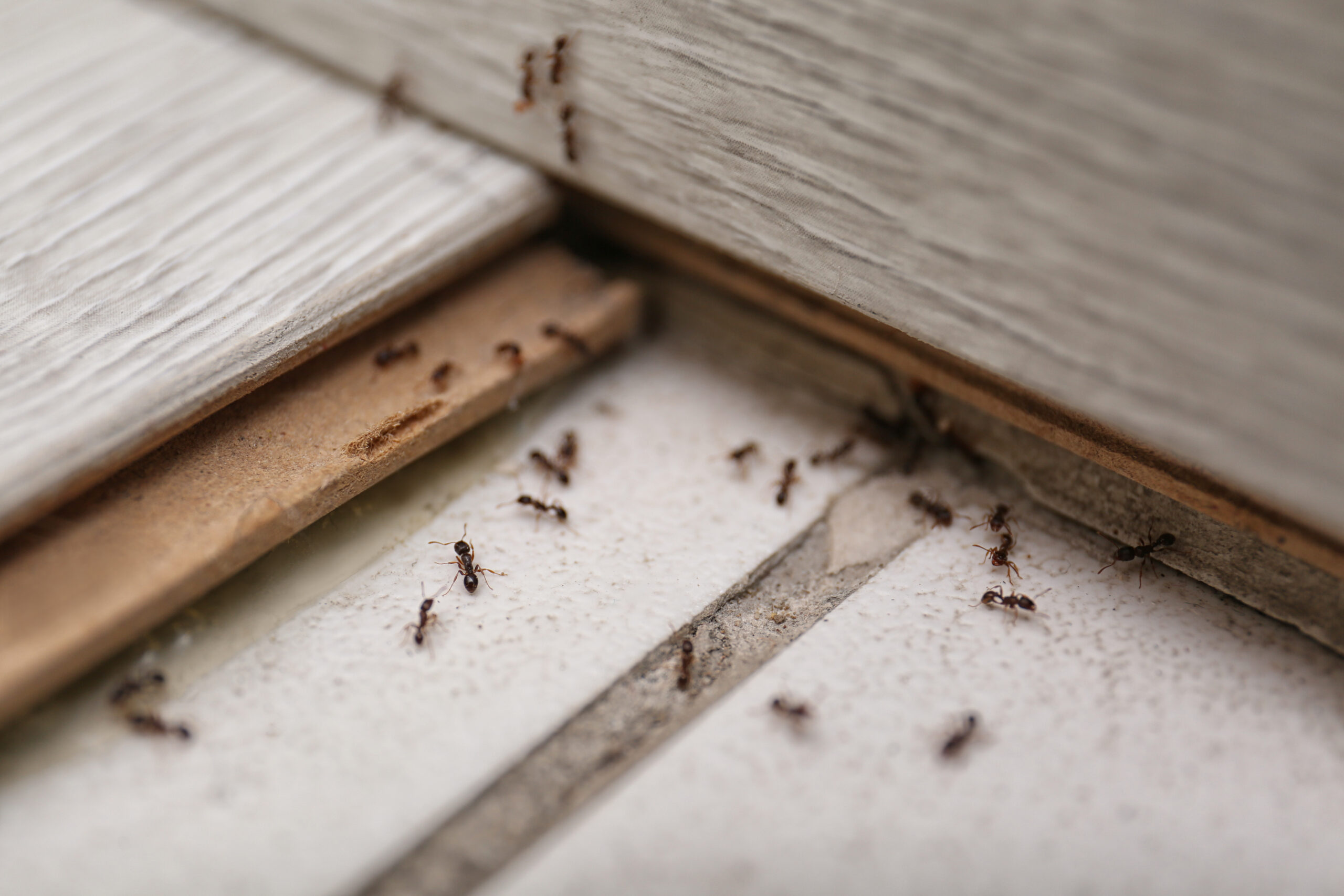
Ants must think they’re the best thing since sliced bread, considering the fact that we see them everywhere regardless of how logical it seems. In a new build, ants were likely already on the property when their anthills were destroyed by the construction. When their nest is disturbed at all, ants go into “high alert” mode and want to protect their colony at all costs.
Displaced from their home, ants have nowhere left to turn but through cracks and crevices of the new house. It doesn’t help that they’re also drawn to the irrigation, landscaping, and controlled temperature of the house. Any standing water and food crumbs that happen to be on the property are also major attractants of any ant species.
Flies
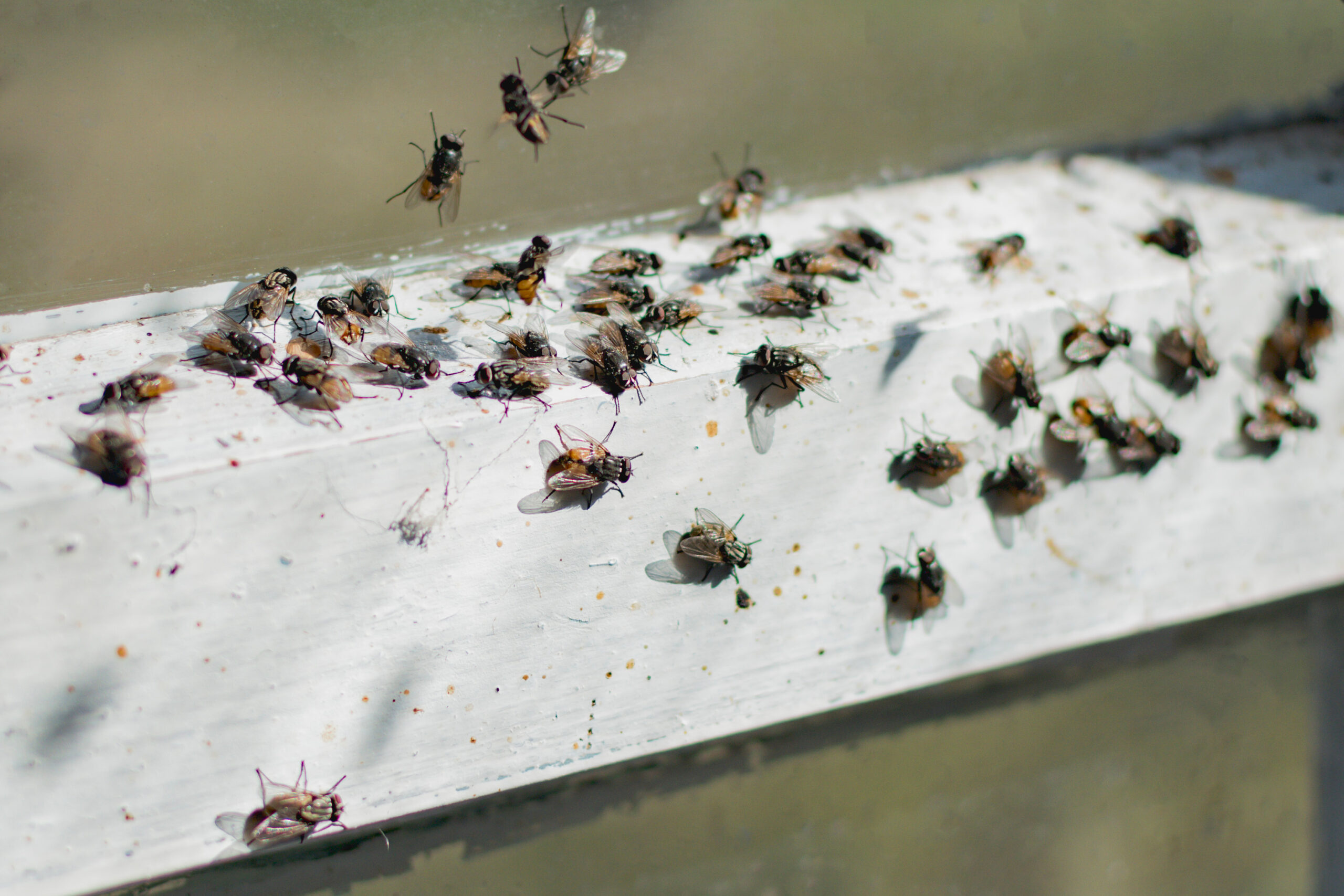
Despite their small size, flies have a strong sense of smell that lures them to areas with food sources from miles away. They will eat just about anything organic or rotten (or both), so any food-related spills on the premises are appealing to flies. Flies also flock to organic items on the “disgusting” end of the spectrum, including bird droppings and dead rodents, so these would attract flies to a new build.
It’s also common to have a dumpster or another large trash receptacle on site throughout construction, so flies will gather here if there’s even one piece of organic matter inside. The warmth of the sun encourages flies to reproduce, so houses that are built in the warmer months may see a larger fly population at first.
Rodents
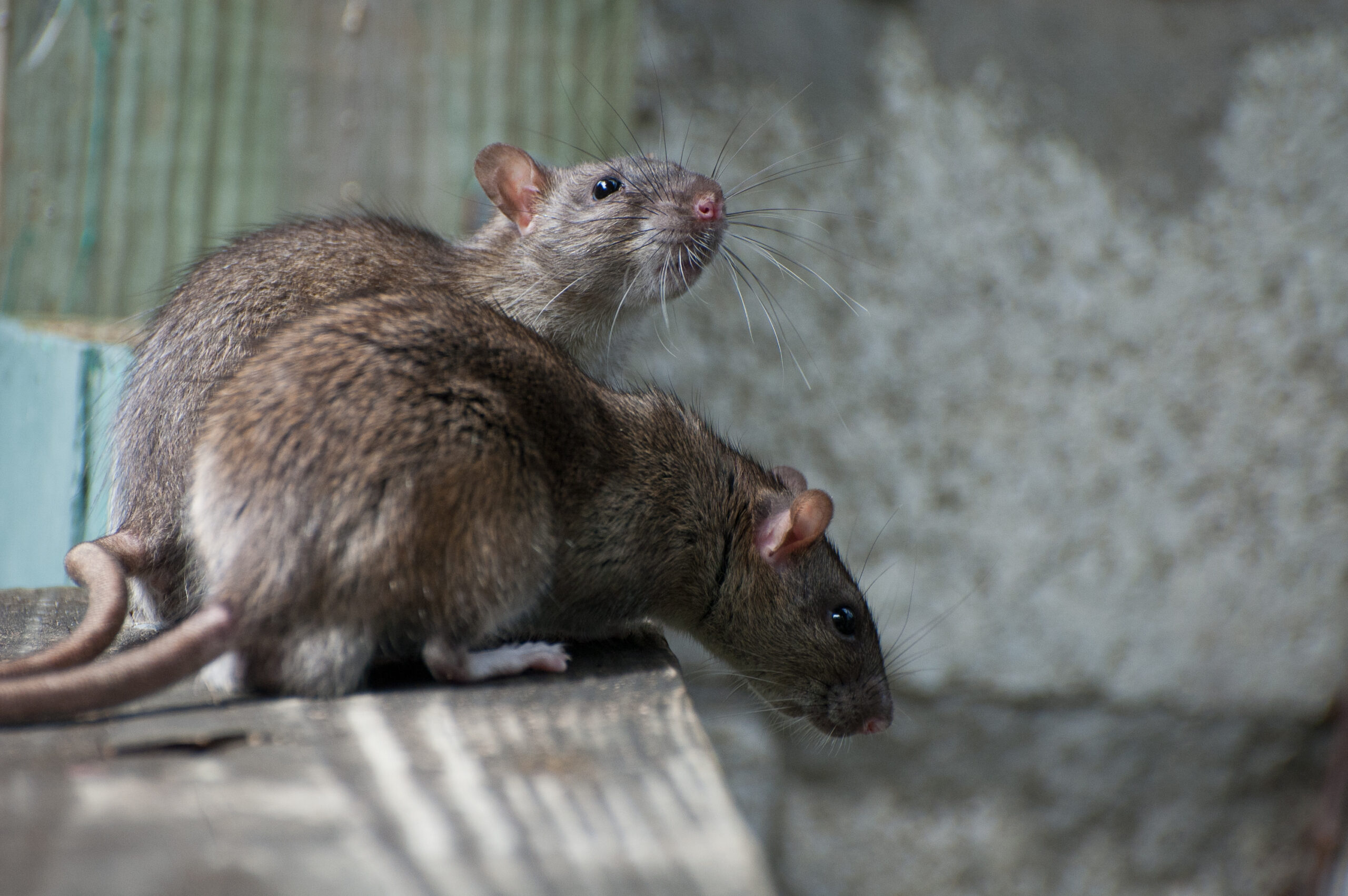
Speaking of rodents, rats and mice are frequent pests themselves in new homes. The construction may ruin existing rodent nests, prompting the pests to invade the new structure. Rodents also invade if the construction takes a while, which can result in the critters being trapped in the walls or under the floors due to their expert hiding skills. Roof rats invade houses through the roof vents, so rodents stop at nothing to get inside.
There are plenty of materials and food sources on the sites of new homes for lowly rodents. They can use insulation, foam, and packing materials for their new nests. Rodents often invade unprotected dumpsters for the abundance of random food sources they have inside. Rats and mice also cause issues by chewing on everything with their open-rooted teeth, including plumbing lines, wood, and electrical wires. If the new lights or plumbing aren’t working, it could be the work of pesky rodents.
Spiders
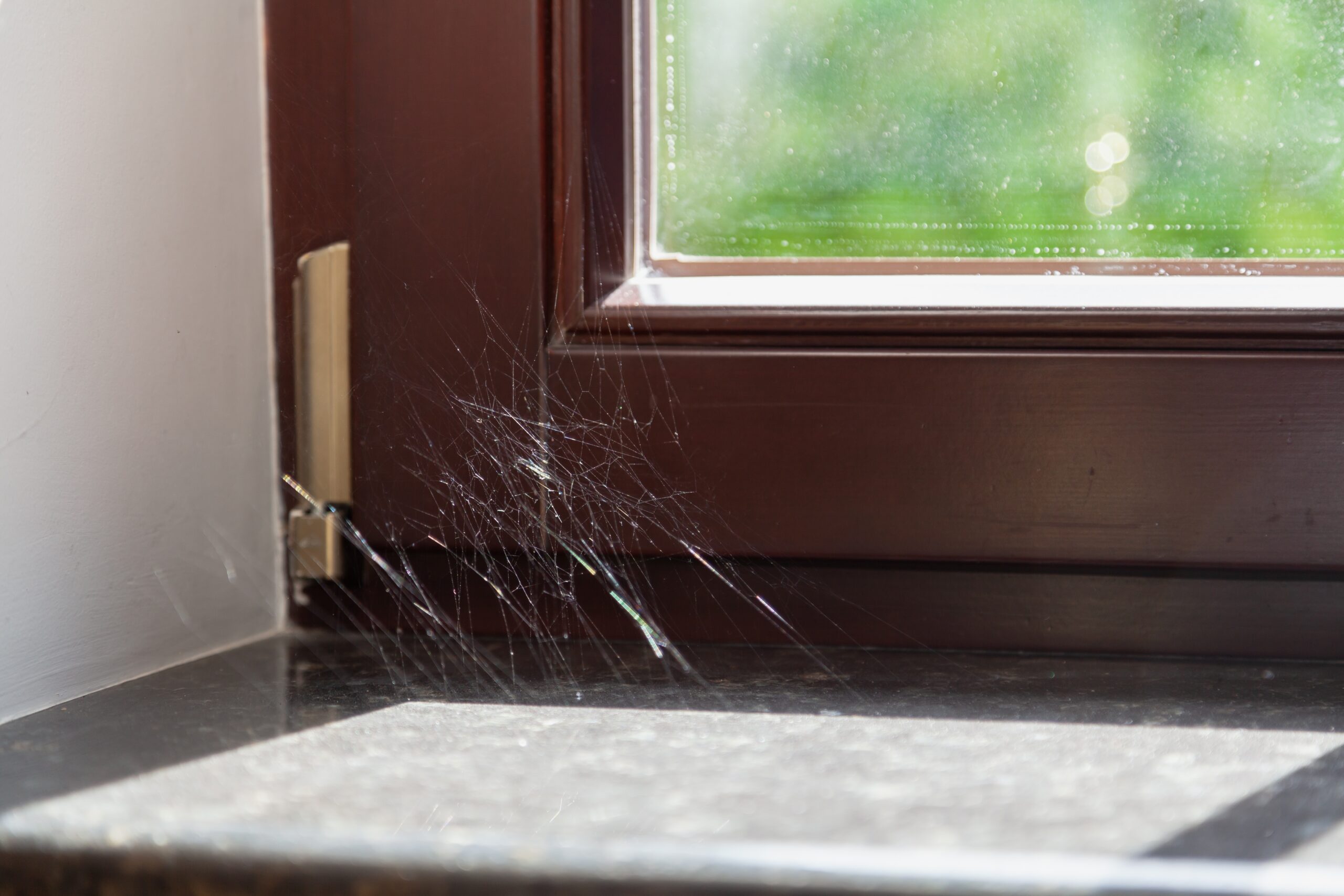
Where there are pests, there are spiders — as chilling of a thought as that is. This is because spiders live off of insects and other small pests. Whether they hunt or catch them in their sticky webs, spiders need to live somewhere that they have constant access to food. If a new house already has a pest problem, spiders may see that as an opportunity to sneak inside and get in on the buffet.
The web-building spiders — house spiders, orb weavers, black widows — can easily weave their webs in a new house since there isn’t anyone around to stop them at the moment. All of the undisturbed corners of new homes are perfect for a lonely spider looking for a safe habitat. Plus, the construction process disturbs the local grass, trees, and dirt, which then disrupts the lives of any nearby spiders. An empty house is a much safer habitat for a simple spider!
Stinging Pests
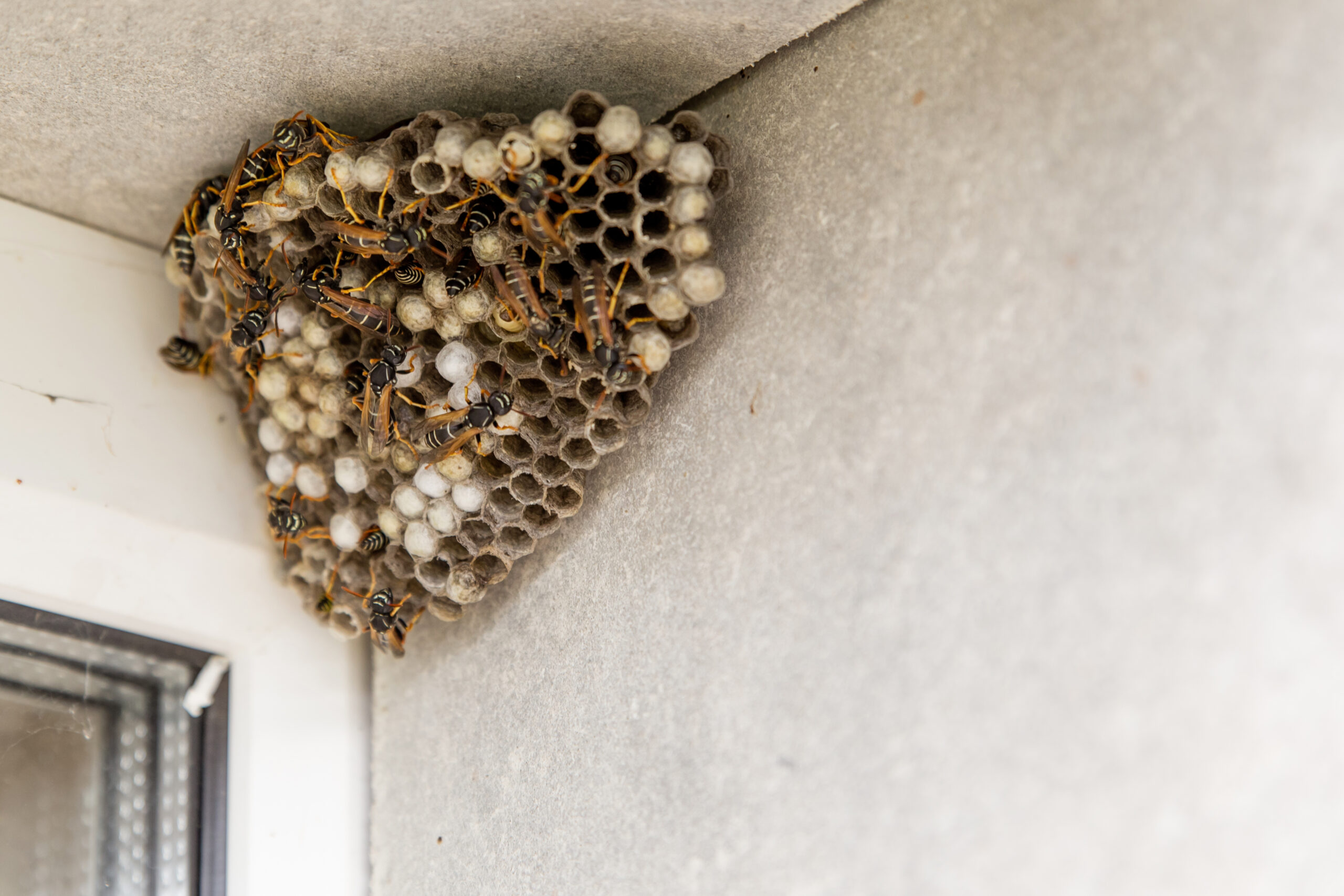
There are two main ways that stinging pests use a new house for their own benefit. One is to actually invade the house through a forgotten crack or gap in the siding. Most queen bees and wasps like to overwinter inside a structure to stay safe until spring arrives. Paper wasps eat smaller insects, so they like to invade places with a pre-existing insect population. The workers of a bee or wasp colony usually won’t stray too far from their group, but this isn’t a problem if the nest is also in the home.
Speaking of which, that’s the second way: building their nest on or in the house. Most common species like to keep their nests elevated since it’s safe from a lot of their natural predators. Their favorite spots are roof lines, trees, sheds, eaves, and gutters. If a nest is built anywhere near new homes, those stinging insects will be incredibly territorial of their own space. We strongly recommend never removing a nest on your own because these pests won’t hesitate to sting anyone who dustbins their nests.
Termites

Last (but never least) are termites, which are a worrisome pest for homes of any age. They devour the cellulose found in wood, so termites often invade the unprotected wooden beams and framework of a new house. Moisture-damaged wood is preferred since it’s easier to eat, so any materials left out in the rain are more at risk. Subterranean termites are pretty common at these sites since they can burrow into the lumber without anyone noticing for a while.
Termites may be found near damp soil and leaking areas of a new build, especially if a lot of wood is stored nearby. If a colony establishes itself on the site, you may see mud tubes — columns of packed dirt — on the concrete or siding that hides their nest. Termites are also known to ravel in wooden furniture, such as coffee tables and dressers. Make sure to inspect any imported furniture before bringing it inside your new home. A termite infestation is not a fun housewarming present to receive!
Pest Prevention in New Homes
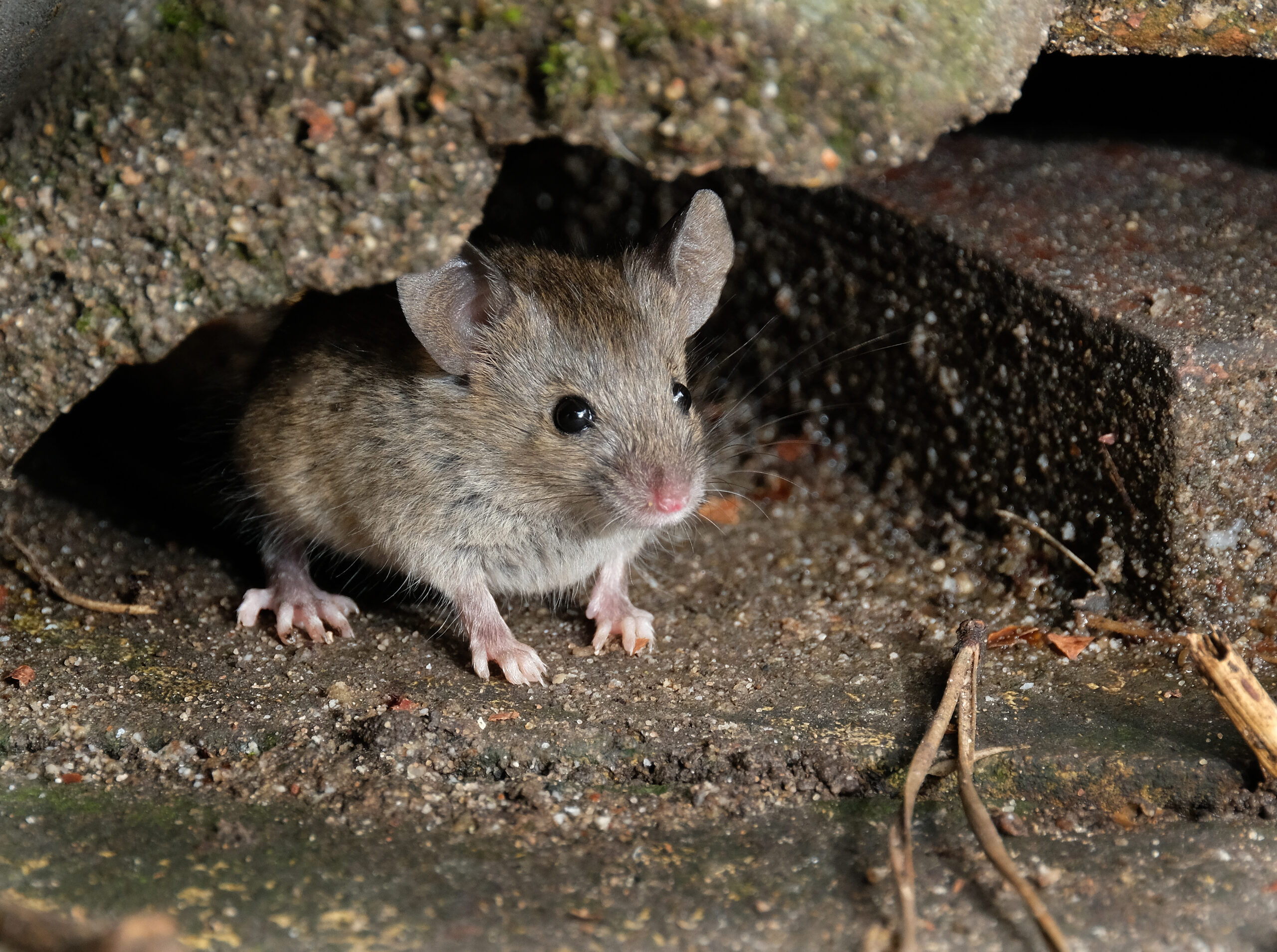
The key to preventing pests is to match their determination, just with different actions. It’s essential to stay one step ahead of these critters by eliminating their food, water, and hiding spots before they can invade. All it takes is a watchful eye and a bit of prep work.
Our top tips on preventing pests in your new house — or any house, really — are:
- Check the seals on doors and windows. Smaller pests sneak through every gap that they can, so make sure all of your doors and windows are sealed properly. They should be since they’re brand new, but talk to your warranty specialist or contractor if you find a faulty seal.
- Find out about preventative treatments. The best way to solve a pest problem is to stop it before it starts! Talk to your team about the most common pests in your area and consider introducing preventative measures, like baited traps and termite pre-treatments.
- Keep the doors closed. The doors are constantly open throughout the construction and moving processes since it’s more convenient for everyone going in and out. It’s fine to leave the house open while people are working on it, but try to keep the doors closed as often as possible when no one needs to enter and exit as much.
- Schedule a pest control inspection early on. Once the house is complete and move-in ready, we recommend scheduling your first pest control inspection ASAP. The technician should complete a thorough inspection that shows them the signs of any early pest problems and the best treatments for your new home.
Protect Your Greatest Investment With Green
You want to start this new chapter of your life off on the right foot, and one of the best ways to do that is with professional services from Green Pest Services! Our team is licensed and trained in the most efficient ways to solve all kinds of pest issues. From ant invasions to hornet nests, we are prepared to treat any major pest problem you may have. Between our thorough inspections and our reliable treatments, those pests don’t stand a chance against our team. Contact us today for a free quote on our dependable services and say goodbye to your pest problems, both old and new!
Citations
Bulwark Exterminating. (2019, September 17). Top 5 reasons why your newly built home has bugs. Shine Builder Partnerships. Available at https://rebates.builderpartnerships.com/Default/ViewResource/f4496a5e-99d9-e911-9f3f-ef854bb487e2 (Accessed April 22, 2024).
Farkas, J.T.Q. (2023, December 31). Top 8 common household bugs and how to get rid of them. Today’s Homeowner. Available at https://todayshomeowner.com/pest-control/guides/common-bugs-in-house/ (Accessed April 22, 2024).
Glover, E. & Allen, S. (2024, March 8). 7 most common insects to look out for in your new home. Forbes Home. Available at https://www.forbes.com/home-improvement/pest-control/common-household-bugs/ (Accessed April 22, 2024).
How to prevent pests during construction. (n.d.). PestShield. Retrieved April 22, 2024, from https://www.pestshield.com/blog/how-to-prevent-pests-during-construction/
Seemann, D. (2002, April). Construction basics: Pests of new construction. Pest Control Technology. Available at https://www.pctonline.com/article/construction-basics–pests-of-new-construction/ (Accessed April 22, 2024).
Keep Pests Out of Your Holiday Gatherings
Keep Pests Out of Your Holiday Gatherings Keep Pests Out of Your Holiday Gatherings Summary: The holiday season is all about good food [...]
Cold Weather vs. Warm Weather Infestations: How Temperature Shapes Pest Activity
Cold Weather vs. Warm Weather Infestations: How Temperature Shapes Pest Activity Cold Weather vs. Warm Weather Infestations: How Temperature Shapes Pest Activity Summary: [...]
Garden Pests Do Not Hibernate Indoors – How They Attack Houseplants And What To Do
Garden Pests Do Not Hibernate Indoors – How They Attack Houseplants And What To Do Garden Pests Do Not Hibernate Indoors – How They Attack [...]
The Scariest Pests (And Why They Freak Us Out)
The Scariest Pests (And Why They Freak Us Out) The Scariest Pests (And Why They Freak Us Out) Summary: A practical, homeowner-friendly guide [...]
Favorite Foods of Rats and Mice
Favorite Foods of Rats and Mice Favorite Foods of Rats and Mice Summary: Rats and mice are surprisingly picky about what they eat—especially [...]
Where Do Spiders Like to Hide? A Locals’ Guide to Sneaky Spider Spots (and What to Do About Them)
Where Do Spiders Like to Hide? A Locals’ Guide to Sneaky Spider Spots (and What to Do About Them) Where Do Spiders Like to Hide? [...]

